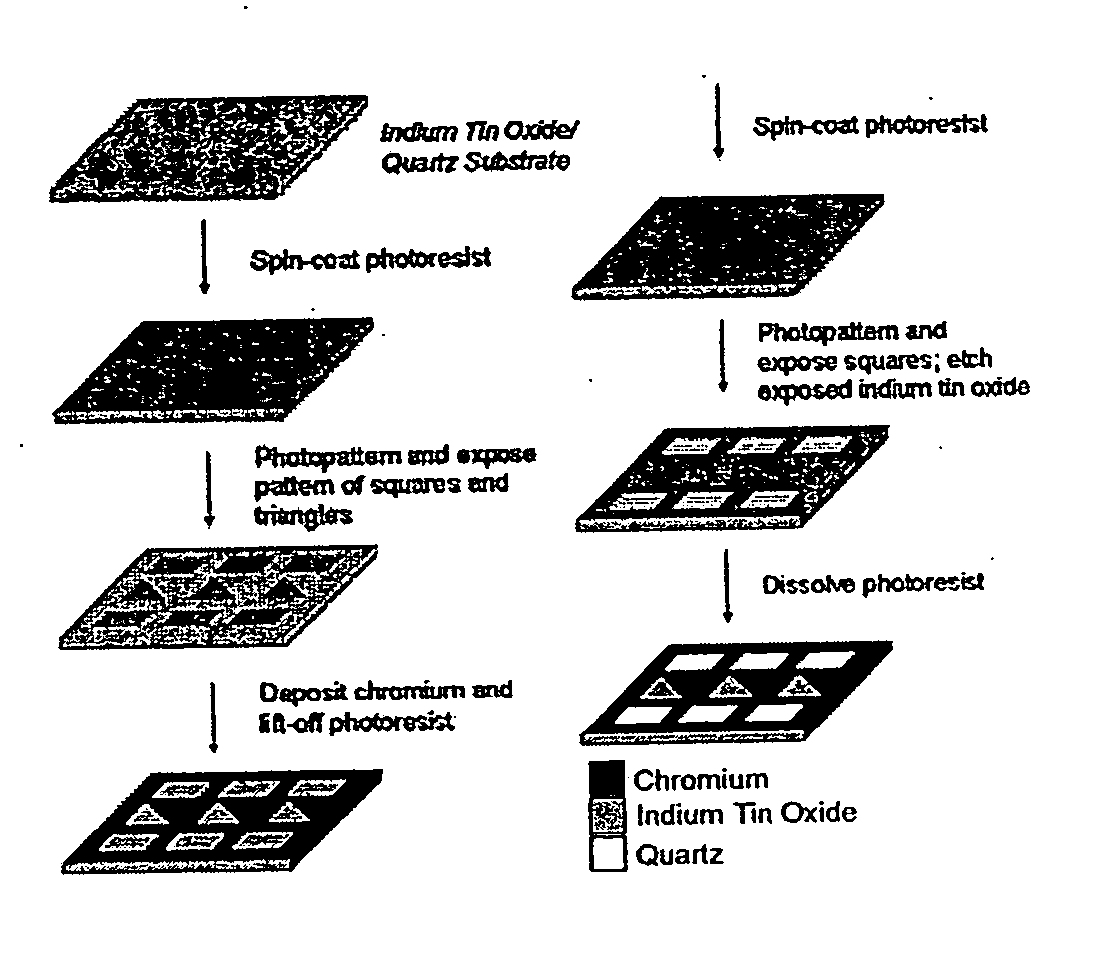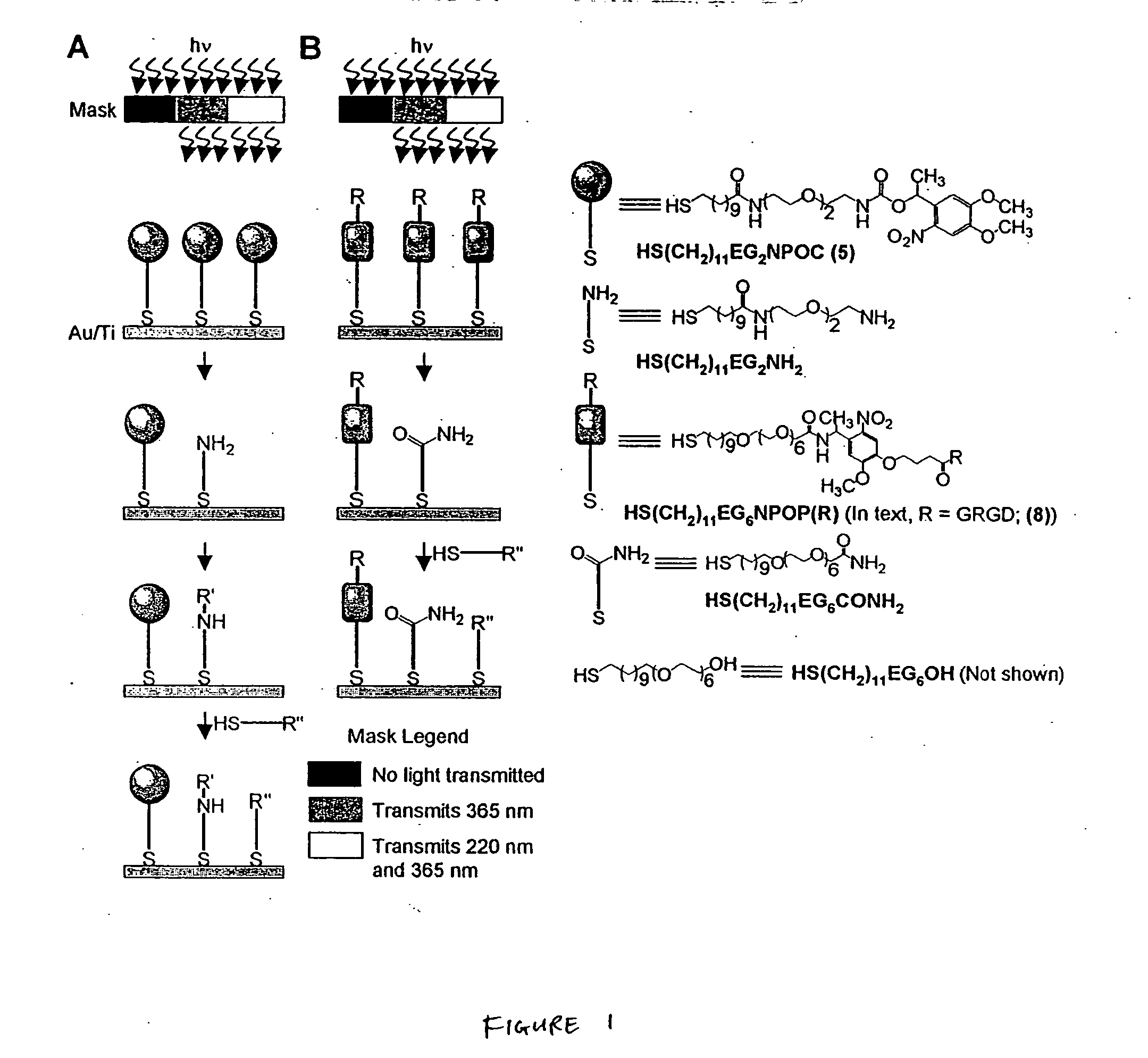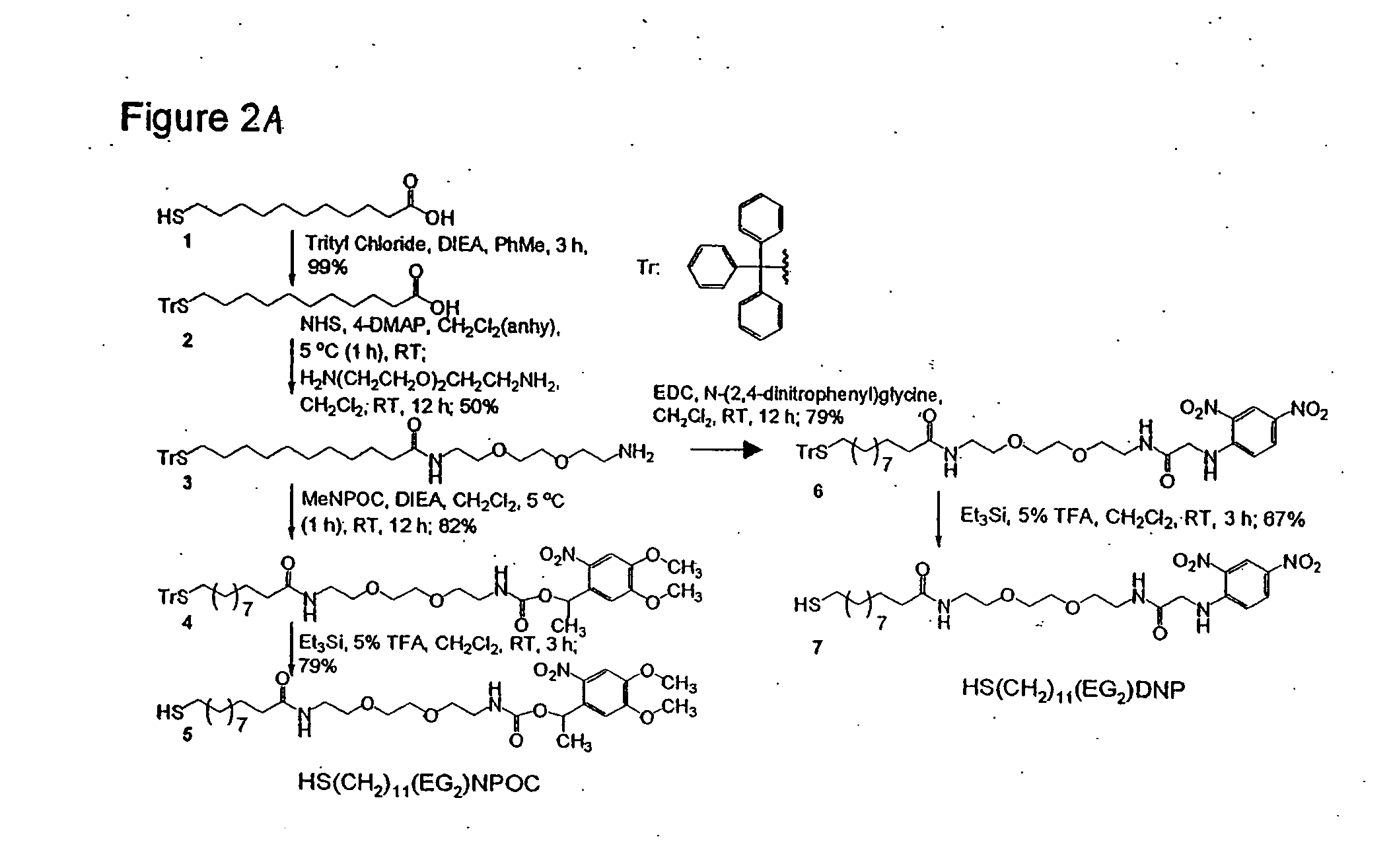Patterning and alteration of molecules
a technology of molecules and molecules, applied in the field of alteration of molecules, can solve the problems of discontinuous patterns, inability to align multiple mimics, and limited resolution of features,
- Summary
- Abstract
- Description
- Claims
- Application Information
AI Technical Summary
Benefits of technology
Problems solved by technology
Method used
Image
Examples
example 1
Syntheses of Alkanethiols Used for Patterning Multiple, Aligned SAMs
[0098] This example describes procedures for synthesizing certain photocleavable alkanethiols that were used in the formation of SAMs on a gold surface. As would be understood by those of ordinary skill in the art, similar techniques as described below and / or other procedures for synthesizing known in the art could be employed to make various other photocleavable alkanethiols within the scope of the invention. Similarly, modifications of the techniques below and / or use of a variety of other know techniques could be employed by those of ordinary skill in the art to synthesize other molecules, such as SAM-forming molecules, having a moiety able to react with and bind to a surface of an article of the invention (e.g. in certain embodiments a silane moiety or thiol moiety), and a photocleavable moiety(s).
[0099]FIG. 2 describes the synthesis of photocleavable alkanethiols. Briefly, a trityl-protected form of mercaptoun...
example 2
Fabrication of the Photomask Used for Patterning Multiple, Aligned SAMs
[0113] This example describes the fabrication of a photomask that is selective to multiple wavelengths, having patterns of squares and triangles (see FIG. 3). This photomask was used as both an area- and wavelength-selective filter. The squares (made in quartz) allowed all wavelengths of light to pass through; the triangles (made in indium tin oxide, ITO) allowed 365 nm light to pass through (but is essentially opaque to light at 220 nm), and the rest of the photomask was covered with chromium, which was opaque to all wavelengths of light used. The photomask, once fabricated, could be used repeatedly.
[0114] To demonstrate photopatterning of SAMs using two different wavelengths of light from a Hg(Xe) arc lamp, a mask was fabricated with an array of squares in quartz and an array of triangles in ITO; the remainder of the mask was rendered opaque using chromium (FIG. 3B). The photomask, once fabricated, could be u...
example 3
Patterning Multiple, Aligned SAMs Using Photolithography
[0117] This example describes the patterning of a gold substrate with three aligned regions of self-assembled monolayers (SAMs) using one photomask and one set of exposures to light at different wavelengths, but without the need for realignment of photomasks between exposures. This method uses a polyfunctional alkanethiol that forms a SAM on a gold substrate and that presents two types of photocleavable bonds: a photocleavable group that cleaves on exposure to light at 365 nm and a thiolate bond (Au—S) that cleaves on exposure to light at 220 nm.
[0118] The multi-wavelength selective photomask was placed 10-50 μm above the gold surface containing the SAM, although the mask could also be placed in direct contact with the SAM. The photomask was exposed to light at 220 nm (15 mW / cm2, 15 min) and 365 nm (34 mW / cm2, 3 min).
[0119] Two methods are described: the photopatterning method described by FIG. 1A produced a SAM that termina...
PUM
| Property | Measurement | Unit |
|---|---|---|
| first wavelength | aaaaa | aaaaa |
| wavelength | aaaaa | aaaaa |
| wavelengths | aaaaa | aaaaa |
Abstract
Description
Claims
Application Information
 Login to View More
Login to View More - R&D
- Intellectual Property
- Life Sciences
- Materials
- Tech Scout
- Unparalleled Data Quality
- Higher Quality Content
- 60% Fewer Hallucinations
Browse by: Latest US Patents, China's latest patents, Technical Efficacy Thesaurus, Application Domain, Technology Topic, Popular Technical Reports.
© 2025 PatSnap. All rights reserved.Legal|Privacy policy|Modern Slavery Act Transparency Statement|Sitemap|About US| Contact US: help@patsnap.com



